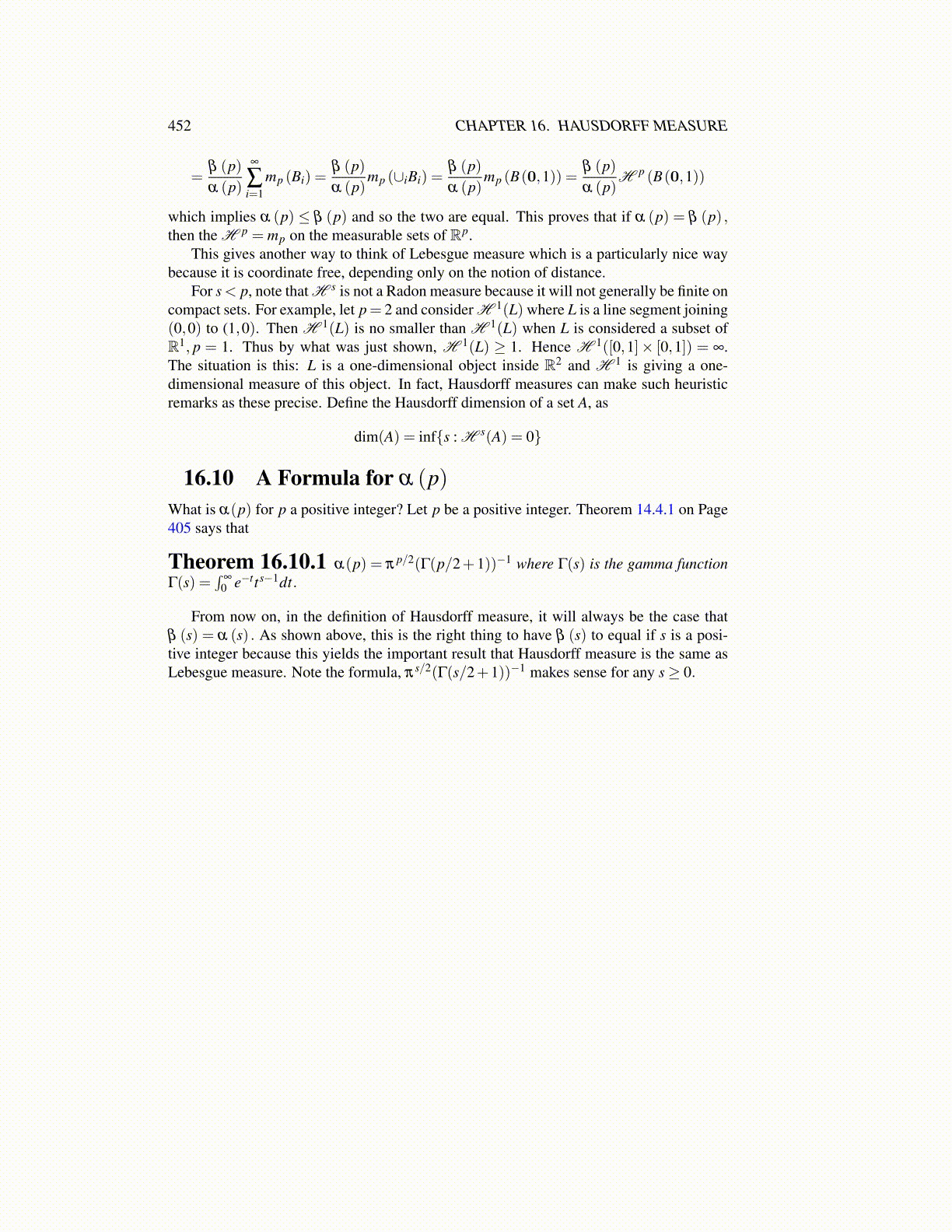
452 CHAPTER 16. HAUSDORFF MEASURE
=β (p)α (p)
∞
∑i=1
mp (Bi) =β (p)α (p)
mp (∪iBi) =β (p)α (p)
mp (B(0,1)) =β (p)α (p)
H p (B(0,1))
which implies α (p) ≤ β (p) and so the two are equal. This proves that if α (p) = β (p) ,then the H p = mp on the measurable sets of Rp.
This gives another way to think of Lebesgue measure which is a particularly nice waybecause it is coordinate free, depending only on the notion of distance.
For s< p, note that H s is not a Radon measure because it will not generally be finite oncompact sets. For example, let p= 2 and consider H 1(L) where L is a line segment joining(0,0) to (1,0). Then H 1(L) is no smaller than H 1(L) when L is considered a subset ofR1, p = 1. Thus by what was just shown, H 1(L) ≥ 1. Hence H 1([0,1]× [0,1]) = ∞.The situation is this: L is a one-dimensional object inside R2 and H 1 is giving a one-dimensional measure of this object. In fact, Hausdorff measures can make such heuristicremarks as these precise. Define the Hausdorff dimension of a set A, as
dim(A) = inf{s : H s(A) = 0}
16.10 A Formula for α (p)What is α(p) for p a positive integer? Let p be a positive integer. Theorem 14.4.1 on Page405 says that
Theorem 16.10.1 α(p) = π p/2(Γ(p/2+1))−1 where Γ(s) is the gamma functionΓ(s) =
∫∞
0 e−tts−1dt.
From now on, in the definition of Hausdorff measure, it will always be the case thatβ (s) = α (s) . As shown above, this is the right thing to have β (s) to equal if s is a posi-tive integer because this yields the important result that Hausdorff measure is the same asLebesgue measure. Note the formula, πs/2(Γ(s/2+1))−1 makes sense for any s≥ 0.